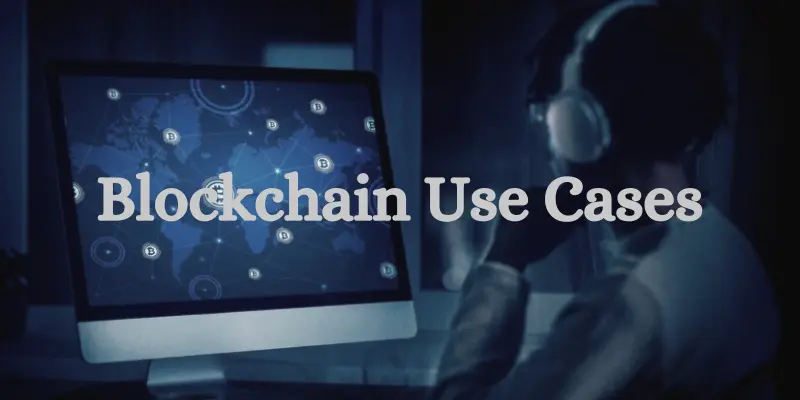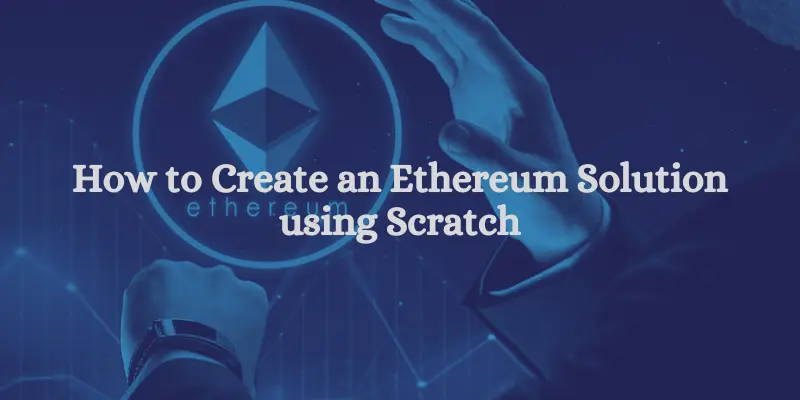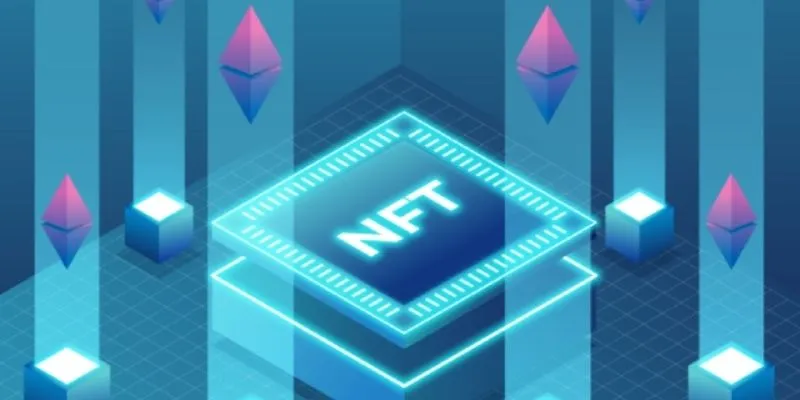Inquiring into the dynamism of 2024, blockchain technology is positioned as a key player that is affecting many sectors, including healthcare and finance. This guide will uncover the complexities of blockchain technology, explaining its workings, applications, and benefits.
The essence of Blockchain is revealed. We explore how the latest data blocks seamlessly connect to the chain. In our investigation, we will explore the advantages and disadvantages of blockchain technology over traditional systems.
Blockchain development tools have multiple benefits that can be found across a variety of industries, from finance to the growing field of NFTs and other NFTs. We will explore these diverse uses.
Technical aspects of blockchain technology, including the development platforms and consensus mechanisms, are explained for better understanding. This guide acts as an aid for anyone who wants to learn about customized blockchain development, providing insight into the most important skills, possible career options, and education resources to help discover the changing world of blockchain development.
What Is Blockchain and How Does It Work
Blockchain networks are enormous databases (digital ledgers) composed of blocks of data linked chronologically. The new blocks of data are added to the customized Blockchain development once they've been reviewed and verified by a miner, one of the computers that is part of the network. Blockchain is essentially an archive of data (e.g., financial transactions).
A key feature of blockchain technologies is their decentralization. It is an open database. It means that each participant in a blockchain network keeps all the data from data on its computer.
This makes it nearly impossible to alter the Blockchain's data later, even if a single copy has been altered and thousands of the correct copies are distributed across the globe. Corrupted or incorrect data can, therefore, be easily removed from the Blockchain.
The arrangement of the blocks of data is also regulated with a checksum to ensure that the block's order isn't altered.
The timestamp generated by cryptography is immutable when a block is linked to another. The identifying number that links between blocks is also called "hash." This is a permanent record, and the validity of the information is checked. The database does not require a central authority to oversee databases, as is the case for traditional databases.
Here's a brief overview of the various steps of how blockchains work:
Create and Verify Blocks: A network user initiates a transaction that involves transferring information, currency, or assets from one person to another. The data is then passed to an unidirectional number of nodes. Every node in the network needs to verify the transaction. If all the nodes reach an agreement when the transactions are deemed approved, all information about the transaction is stored in a block. Different blockchains use different consensus mechanisms for node verification. For instance, the Bitcoin network utilizes Proof-of-Work (PoW). To use this consensus method, miners must solve complicated mathematical issues to verify transactions.
Add Blocks to the Chain Blocks: within the database are of a certain capacity to store information. A new block is created when that limit is exceeded, and the block is checked. The latest block utilizes a unique code, called a "hash," to link back to the previous block. Blockchains are connected chains of all blocks to be added to the Blockchain, making a "chain.
The Ledger is Updated and Completed. The newly updated Blockchain, which contains the latest block, is distributed to all nodes on the network. Each node is able to independently update its versions of the Ledger, which includes the latest block. The transaction is complete, and the latest Blockchain records the changes. Anyone with access to the customized Blockchain development can look at the data within this block. It is safe from tampering because of the cryptographic principles.
Also Read : How to Develop Blockchain App: Step by Step Guide in 2024 -2025
Key Factors for Choosing a Blockchain
When choosing a blockchain to use to develop, several aspects must be taken into consideration:
-
-
Scalability: The capacity to handle an increasing volume of work or accommodate expansion.
-
Security: There are protocols and measures to safeguard against hacks and other attacks.
-
Tool for Development and Support: The availability of development kits, documents, and assistance.
-
Ecosystem and Community: A strong community contributing to the platform's development and offering assistance.
-
Transaction and Cost Fees : The costs involved in the deployment and operation of applications.
-
Advantages of Blockchain
Blockchain technology provides several advantages over traditional systems. Here, you will find an overview of the significant benefits of using blockchain technology.
Decentralization
Blockchain networks spread information across a number of computers, reducing the chance of centralized control and loss. However, conventional systems are typically controlled by a central authority, which means that a single person or entity controls the system and decides.
An illustration can be supply chain management. Various participating businesses, including suppliers, producers, distributors, transport companies, and retailers, would like or need access to information from the other chain members. However, nobody takes the responsibility of sharing that information. Blockchain solves this issue.
Trust
The concept of trust is an integral part of the Blockchain. Multiple parties can interact with one another and facilitate peer-to-peer transactions even when trust is either absent or not proven.
Cryptocurrencies are an excellent example of blockchain technology that allows trust between parties. Transactions are conducted without identifying or relying on the other person.
Security
Blockchain development services create a tamper proof audit trail of transactions, encrypted from end to end, to avoid the possibility of fraud or unauthorized activities.
Blockchain's decentralization means that data is stored on a vast computer network, making it early on impervious to hacking. This is in contrast to conventional systems, where only one copy of the data is kept on one central server.
Reduced Costs
Blockchain is notable for its ability to improve operational efficiency by removing intermediaries like banks. Direct peer-to-peer communication reduces transaction costs and speeds up processes, especially in international transactions.
Compared to traditional systems, Blockchain enables faster and more efficient transactions.
Transparency
One of the main advantages of Blockchain is its transparency. Contrary to conventional systems, where transaction records could be under-recorded, Blockchain ensures that each participant on the network has access to all transaction information.
It means that anyone can view the details of transactions, including the date, time, parties involved, and amount. This helps prevent fraudulent transactions by ensuring transparency and establishing trust among users.
Immutability
The most crucial feature of blockchains is their unchangeability. When data is stored, it is not changed or deleted. Once a transaction is added to the Blockchain and stored on a block. By cryptographic principles, every block is chained to the previous block to develop a continuous, permanent sequence of records.
Because the changed data in the blockchain network is complicated and easily detected, it provides an encrypted and secure platform for transactions and information storage.
Accessibility
Blockchain is the most popular choice due to its accessibility worldwide. It has many advantages for areas that cannot access traditional financial services. It also reduces the barriers to entry that are typical in finance, such as credit checks and significant initial investments.
It opens financial options such as saving and investing to a wider range of people regardless of place of residence or economic background.
Also Read : DeFi Development - Use Cases, Challenges & Future in 2024
Challenges and Disadvantages of Blockchain
Blockchain technology is revolutionary and transformative. However, it has certain disadvantages and issues. Here are some significant challenges that Blockchain faces:
Complexity
Blockchain can be complex and confusing to comprehend. For those who do not have technical expertise and experience, understanding the realm of Blockchain and cryptocurrency is difficult. Therefore, the majority of the population is reluctant to plunge into this area. This can create the biggest obstacle to adoption and understanding for a large portion of the population.
Limited Scalability
Blockchain is a challenge for scaling, which results in slow transaction speeds during high-traffic times. When the blockchain network is full, this can show delays and increased transaction costs. The capacity of the network varies depending on the customized Blockchain development.
For instance, Bitcoin is limited to processing just seven transactions every second. However, centralized systems such as Visa can handle up to six thousand transactions daily.
Irreversibility of Transactions
Because of Blockchain's immutability, a transaction can't be reversed or altered once a transaction has been registered. That means that when a mistake is committed, it is not easily rectified.
Energy Consumption
Blockchains such as Bitcoin or Ethereum 1.0 that utilize a consensus mechanism based on Proof-of-Work consume extremely high amounts of energy. This is due to the enormous computational power required to mine and verify transactions.
However, the Proof-of-Stake consensus mechanism is less dependent on computational power. This is why Ethereum 2.0 was converted to Proof-of-Stake.
Limited Privacy
Security concerns can arise because public blockchains are transparent, meaning anyone can access the transactions.
Limited Interoperability
Blockchain interoperability refers to the capability of disparate blockchain networks to interoperate and exchange data.
Each Blockchain is independent and has its own rules and protocols. This leads to the absence of a natural interface and data transfer between the different blockchains, which in turn hinders their full ability and utility.
Blockchain Use Cases

Certain advantages of blockchain technology, such as increased security, transparency, and the ability to change, have been the catalysts for its adoption across a variety of industries.
Because technology is evolving quickly and the possibilities for new applications for Blockchain are being investigated in 2024, the list below needs to be more comprehensive but will provide everyday use case examples. For a deeper study of the uses of Blockchain with specific examples from industry, check out our blog post dedicated to blockchain applications within sectors.
Finance
Bitcoin and Ethereum are cryptocurrencies. (like Bitcoin and Ethereum) are among the most well-known blockchain use scenarios.
Blockchain development services also facilitate the international transfer of funds in a quicker and more affordable way than traditional banking.
Decentralized Finance (DeFi) comprises financial services such as borrowing, lending, and trading that operate on a blockchain and do not require traditional intermediaries in finance.
Healthcare
Blockchain offers an unalterable, secure, and reliable record of data about patients.
Additionally, it could increase the trust in research into pharmaceuticals and trace drugs from manufacturing until the time of delivery to avoid counterfeit medicines.
Supply Chain Management
Blockchain records the seller's manufacturing, shipping, and delivery of goods to the client and provides an irrevocable history.
By allowing transparent product tracking, Blockchain can prevent fake goods from being sold on the market.
Real Estate
Blockchain records property titles and allows for land ownership and property transfer.
Identity Verification
Blockchain can create electronic identities that are safe and permanently kept on the internet. This guards against identity theft and fraud.
Documents for travel can also be verified using blockchain networks.
Legal Industry
The smart contract is a kind of self-executing digital contract used in blockchains, that automatically ensures compliance and execution of agreements. The agreements and terms are encoded into code permanently stored on the Blockchain.
Non-Fungible Tokens (NFTs)
Unique digital objects, such as art and collectibles, and real estate properties, such as NFTs, could be portrayed on blockchains.
Also Read : What is The Cost For Developing A Blockchain Application?
The Future of Blockchain Development
Looking towards 2024 and beyond, the future of Blockchain is auspicious. With the growing acceptance of blockchain technology in various sectors, the need for blockchain experts is predicted to continue rising.
Here are some of the most important customized Blockchain development and trends to look at in the realm of blockchain technology:
Scalability Solutions: As blockchain networks expand in size and use, scalability issues have been uncovered. Continuous research and efforts focus on solving these problems by implementing various scaling solutions, including sidechains, sharding, or layer-2 scale solutions, such as Lightning Network and Plasma.
Interoperability and Cross-Chain Communications: Due to the rapid growth of Blockchain networks, interoperability, and cross-chain communications have become crucial issues to address. Developers are experimenting with ways to facilitate smooth communication and asset transfers across different blockchain networks, creating a more interconnected and connected blockchain ecosystem.
Decentralized Finance (DeFi): The financial decentralization (DeFi) area is rapidly growing in popularity, allowing financial products and services to be built using blockchain networks. Developers are creating new DeFi-related applications, including Decentralized exchanges, lending platforms, and stablecoins, disrupting the traditional banking system.
Non-Fungible Tokens (NFTs): The advent of non-fungible tokens (NFTs) has created new opportunities for ownership of digital assets and authentication. Blockchain developers are looking for ways to use NFTs to benefit different industries, including gaming, art, and collectibles. This is creating different revenue sources and new business models.
Blockchain-as-a-Service (BaaS): As blockchain technology becomes more mainstream, cloud service providers offer Blockchain-as-a-Service (BaaS) solutions, allowing businesses to leverage blockchain infrastructure and services without needing extensive in-house expertise or resources.
New Tools for Developers and Resources: The blockchain development environment is always changing, and new frameworks, tools, and resources are being released to simplify the development process and increase developers' productivity.
As these developments continue to define the blockchain landscape, companies, and developers must be active and flexible, continually improving their skills and embracing the latest techniques and methods to remain at the forefront of the rapidly changing blockchain development market.
Also Read : Do You Need Programming Skills For Blockchain in 2024
How to Create an Ethereum Solution using Scratch

Making a blockchain solution is a time-consuming and intensive project strongly dependent on your specific business. However, regardless of your requirements or goals, you must follow particular actions to build your Blockchain.
Identify a Problem to Solve
It's easy to become entangled in the numerous benefits blockchain solutions can bring. However, it's not a solution that is universally applicable. It is essential first to define precisely what you're hoping to achieve. Examine your general business requirements and then closely evaluate them against the most basic use cases we've described in greater detail earlier for customized Blockchain development.
Creating a clear problem statement that can define the issues you seek to overcome is beneficial. Verify that a blockchain solution can solve these problems successfully. Next, determine if you'll require a migration of your current system to a blockchain development services or create an application from Scratch.
Draft Your Business Requirements
In the next step, you must create your business requirements to ensure everything runs smoothly. Take note of the technology you'll need both off-chain and on-chain to create an entire ecosystem. Use this information to develop a more concrete product roadmap. This can help you stay on track with deadlines and help you comprehend the requirements for resources.
Identify a Consensus Mechanism
Next, you must determine an agreement mechanism- a technique used to build confidence, security, and consensus among the members of a decentralized computer network. There are a variety of consensus mechanisms that you can select, but among the more well-known models today include:
-
- Documentation of the work
- The proof of stake
- Byzantine fault-tolerant
- Consolidation based on deposit
- The evidence of time elapsed
The consensus mechanism you choose depends on your business's specific goals and needs. Therefore, you must examine each one and decide which is most appropriate.
Choose the Best Blockchain Platform
The platform you choose for your blockchain-based application will impact the level of expertise you'll require from your developers. It's crucial to choose the right one. The entire process requires some time for study and development, so select a platform best suited Blockchain Development Company as per your needs.
In assessing your options, consider the problem you're trying to resolve, costs, consensus mechanisms, developers' requirements, and anticipated timeline.
Design Your Blockchain Nodes
It is crucial to decide if you'll require a permitted or unpermitted blockchain network, the programming languages you employ, and other aspects that might impact the development. Are you in need of an open, private, or hybrid solution that meets the needs of your business? The blockchain nodes will be hosted on the cloud, on-premises, or both? What operating system will the application run with (e.g., Ubuntu, CentOS, Debian, Windows, and Red Hat)? There are numerous aspects to consider in this particular step, so be sure to research all your options and assess the results against your goals, budget, and available resources.
Plan Your Blockchain Configuration
For the vast majority of Blockchain platforms, you'll have to prepare for a range of configuration components, which include:
-
-
Permissions
-
The issuance of assets
-
Asset re-issuance
-
Atomic exchanges
-
Key management
-
Multi-signatures
-
Parameters
-
Native assets
-
Formats for Addresses
-
Key formats
-
Signatures on blocks
-
Hand-shaking
-
You can alter some of these elements during development. However, it's best to plan ahead to ensure the success of your development.
Build Your APIs
Some platforms have pre-built APIs for application programming (APIs); others don't. Based on your requirements, it is possible to develop APIs to:
-
-
Generation of key addresses and pairs
-
Audit-related tasks
-
Security of data (through the use of digital signatures, hashes, or)
-
Storage and retrieval of data
-
Smart-asset lifecycle management
-
Smart contracts
-
Design the User Interface
After you've created the entire application, you can start developing an interface for users (UI) for every component of the software. The APIs you've created integrate with the UIs that run on the back end. Visual designs influence the overall appearance of the app, while technical designs affect its architecture.
Choose an Accelerator to Optimize Your Blockchain Application
Once you've created your blockchain application, how do you ensure its implementation is successful? Applications that require high-end computing power need hardware accelerators to boost efficiency, increase flexibility, and enable effective energy utilization.
Accelerators can also optimize specific aspects of blockchain technology, like validating transactions, governance, and data storage. They're crucial for saving time and storage space since they divide the load of transactions between various components to improve the speed of transactions and output.
Conclusion
In terms of programming languages, each one has particular strengths and is selected based on the project's requirements. Solidity is the preferred option for Ethereum smart contracts, and JavaScript is widely used in dApp development. Python is highly regarded for its ease of use for numerous blockchain applications. Go, or Golang, is frequently chosen as a blockchain-related protocol developer because of its effectiveness and flexibility. C++ is employed to create secure and high-performance systems.
Java is commonly used for significant blockchain projects due to its broad application and versatility. The selection of a suitable programming language is crucial when working with customized Blockchain development. It must be compatible with the needs of the project as well as its goals. The selection should consider both the technical aspects and larger objectives of the Blockchain project.













Share this blog